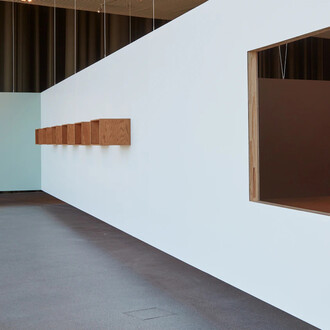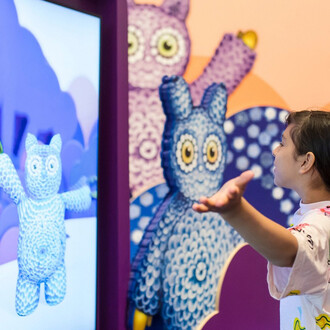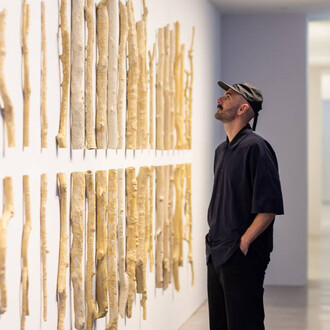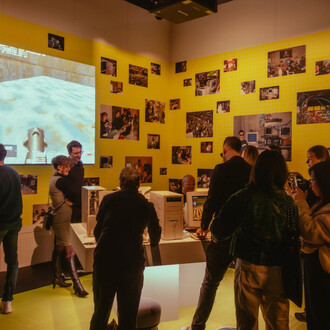During the 1950s, the WWF Sydney Branch on Sussex Street became a hive of activity for wharfies, artists, activists and intellectuals. Clem Milward and Harry Reade were two such artists who became wharfies and contributors to the mural. For them, casual employment on the wharves allowed the flexibility to focus on their artistic pursuits – packaged with the socially progressive politics that came with being involved in a militant union.
The canteen wall mural began rather modestly in 1953, but it soon inspired other artists and by 1965 the mural had wrapped almost completely around the canteen, traversing doorways and windows. It expanded in scope as well and positioned the story of the WWF in that of the larger history and politics of other trade unions, charting Australian industrial campaigns from the 1850s up to World War II.
The mural artists were influenced by ‘Socialist Realism’, a movement that emerged in 1930s communist Russia. Twentieth-century Realist literature and art attempted to depict social or physical realities rather than subjective or idealised views. Socialist Realism sought truthfulness in artistic subject, with a view to educating working people in the history, struggles and spirit of socialism. The WWF formed a partnership with the Studio of Realist Art (SORA). Wharfie Rod Shaw was a founding member of SORA, and he, union leader Tom Nelson and wharfie art student Sonny Glynn envisaged the design of The Wharfies’ Mural. The mural was ultimately a collective effort, reflecting the social and political ideals of those involved. Notable for the times, three of the nine artists were women, Vi Collings, Sonny Glynn, Evelyn Healy and Pat Kelk Graham.
During the 1950s to 1970s, thousands of wharfies ate their lunch in the Sydney canteen surrounded by the giant mural. But from the 1980s, as Sydney Harbour transformed from an industrial port into a residential and tourist one, maritime industry moved to other places such as Port Botany and Wollongong. In the early 1990s, when the wharves were to be redeveloped and the canteen torn down, the wharfies made the farsighted decision to keep their mural.
Removing it was no easy matter, however. The mural had been painted on thin lime plaster on brick and was painstakingly removed in 12 sections, using a specially designed saw to separate it from the brick. The mural was reinstated in the union’s new building and the final addition to the mural was painted in 1993. The mural was moved again, this time to the ANMM. In 1996 significant conservation work was undertaken at the museum, generously funded by the Maritime Union of Australia and many other contributors to a Wharfies’ Mural Appeal Fund.
The recent social history of Australia is inextricably linked with the history of struggle and unity amongst workers on the Sydney waterfront. In our 150th year, we are rightly proud of the contribution our struggle and unity has made to the social fabric of our nation, so it is fitting that The Wharfies’ Mural is in the National Maritime Collection on now on display.
(The Maritime Union of Australia’s National Secretary, Paddy Crumlin)
















